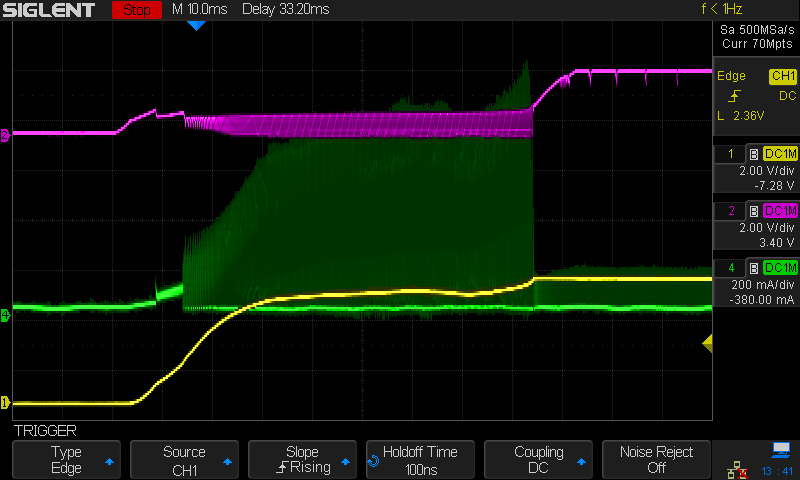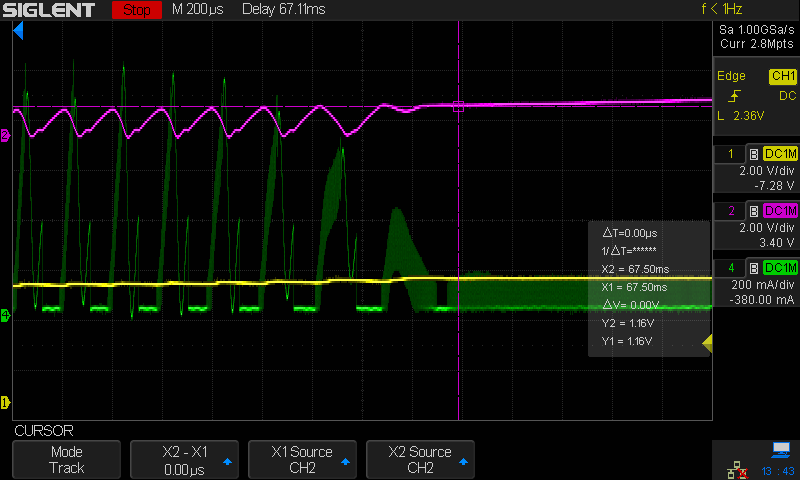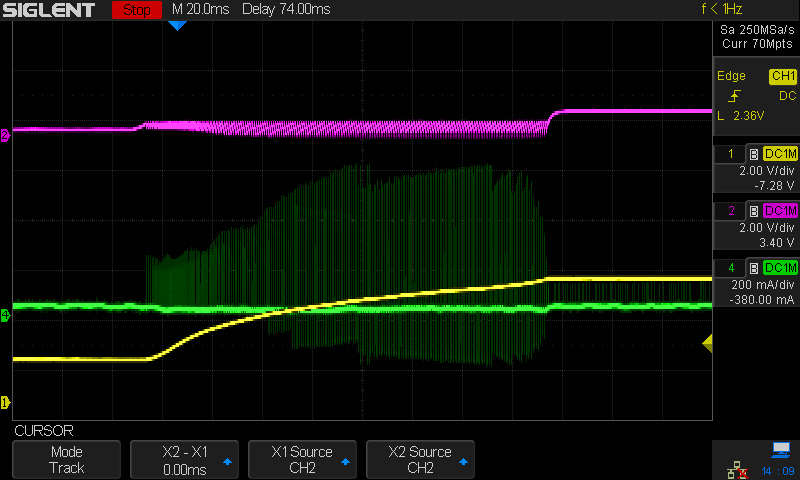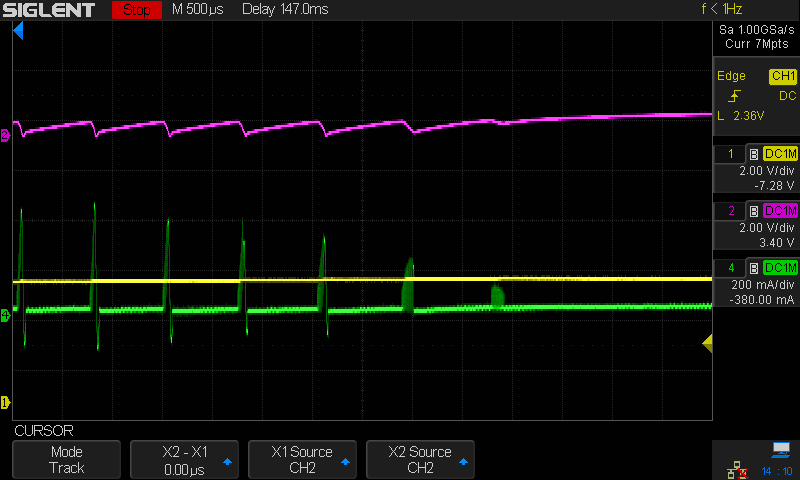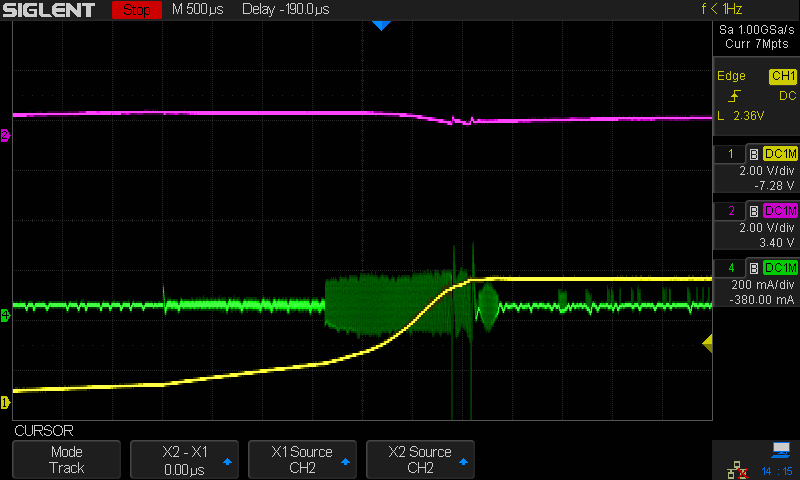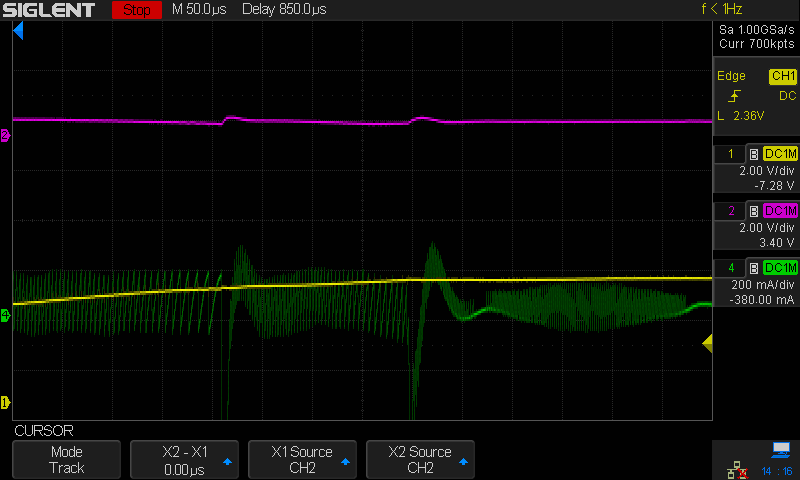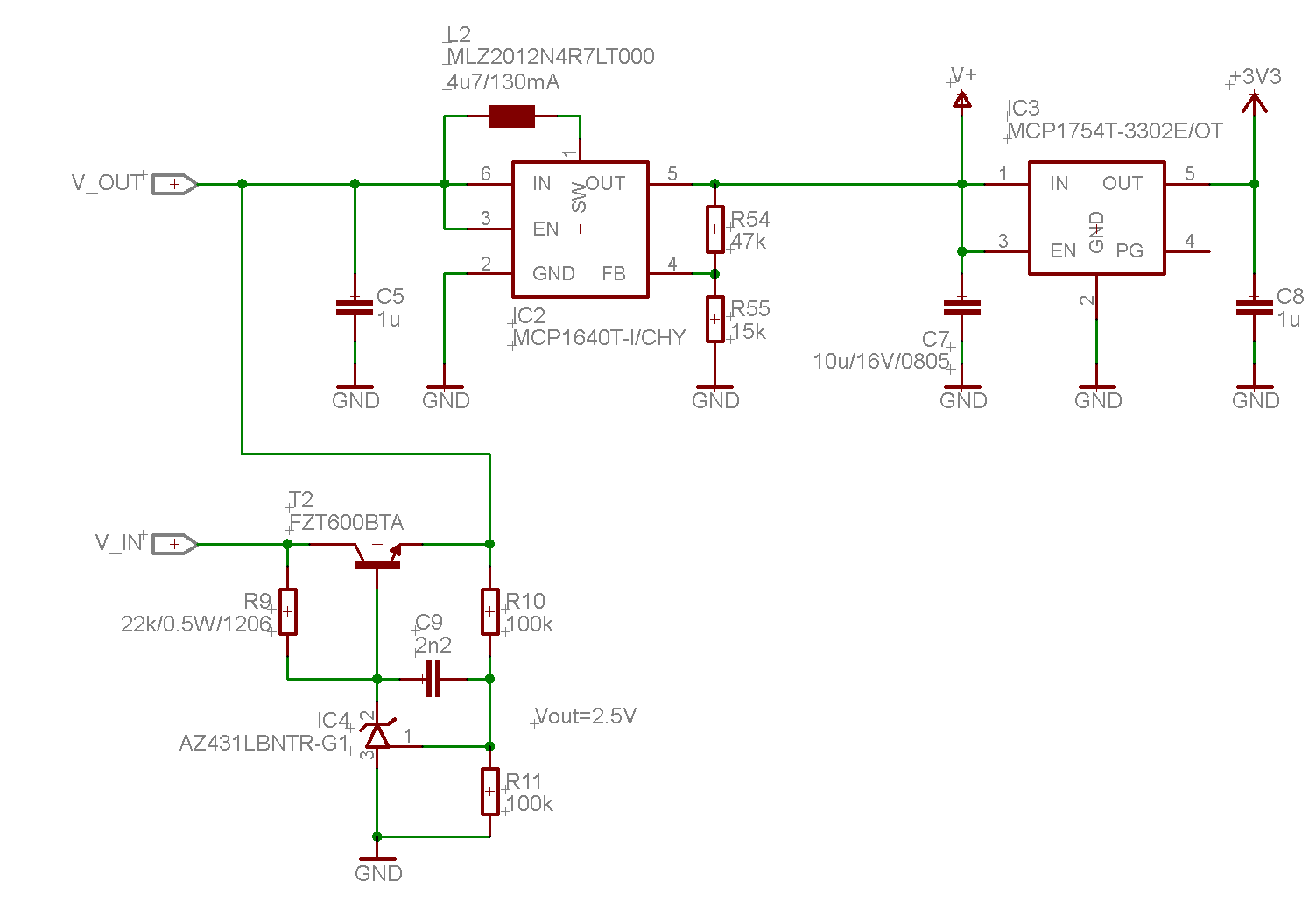Other Parts Discussed in Thread: TPS61023
Hi,
I have been directed to this forum, after having submitted a support request online (case CS0174631). I am having problems with the TPS61322 heating up and drawing excessive current. The converter has a relatively high impedance source that supplies current to it, and I also need to have a large output capacitance (47uF at least). Input capacitance is lower (~ 30uF), used inductor is MLZ2012N4R7LT000. This happens even when I disconnect everything from the output. One question at the beginning, should I share the support ticket info here, or is that accessible for you guys?
Cheers, Frank


